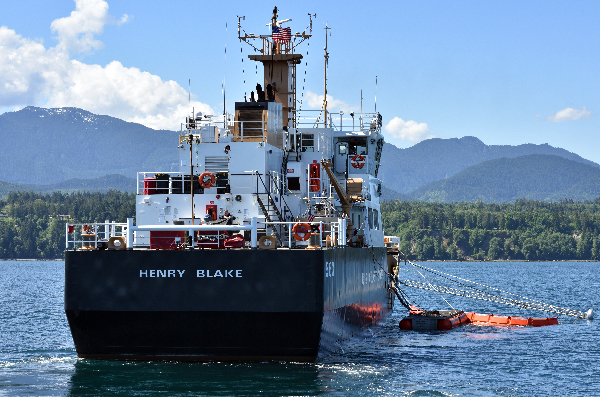OR&R Participates in Canada-United States Joint Marine Pollution Contingency Plan, Pacific Annex
MAY 28, 2019 — NOAA Scientific Support Coordinator LCDR Jim Rosenberg participated in an oil spill response exercise in partnership with the U.S. Coast Guard, Washington Department of Ecology, and the British Columbia Ministry of Environment in the Strait of Juan de Fuca on May 22.

The U.S. Coast Guard, Canadian government, and oil spill response organizations’ vessels and aircraft were deployed near Port Angeles harbor on the May 22 and Freshwater Bay in Canada on May 23. The drill used harmless, non-toxic dye in the water to engage responders as they simulate on-water recovery operations with vessels, boom and skimmers.
The purpose of the drill was to test the activation process for the Canada-United States Joint Marine Pollution Contingency Plan, Pacific Annex (CANUSPAC Annex) and to test moving response assets and personnel across the U.S./Canadian border.
The CANUSPAC Annex is a proactive response plan designed in preparation for the possibility of incidents requiring international response.
Pollution response crews with cleanup equipment from both nations were part of the drill along with cooperating oil spill response organizations and federal and state agencies.”
For further information, contact James.E.Rosenberg@noaa.gov.
